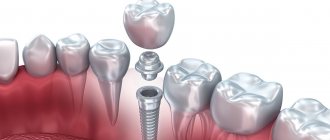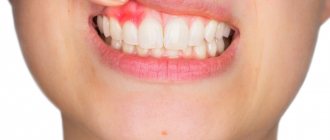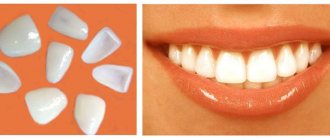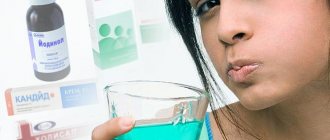Inflammation of the oral mucosa often occurs due to injury, exposure to infections, or systemic disorders in the body, for example, as a result of hypovitaminosis. In most cases, the disease is not life-threatening, but causes a lot of suffering. It is impossible to forget about it for a minute, the bad smell scares others away from the patient, and eating and brushing teeth become a big problem.
Symptoms and causes of stomatitis in adults
In most cases, the presence of inflammation in the oral mucosa can be determined independently, after which you can seek treatment from a dentist. Visual signs of the disease:
- the main indicator is the appearance of round blisters and ulcers on the mucous membrane of the tongue, cheeks, lips, palate;
- the appearance of yellow or white plaque in the oral cavity;
- bleeding and swelling of the gums, redness of the mucous membrane;
- unpleasant taste, burning and pain in the mouth;
- increased salivation.
There are many causes of stomatitis in adults. The disease may be related to oral hygiene or have another nature. This includes insufficiently regular and thorough care of teeth and gums, eating unwashed vegetables and fruits, and choosing the wrong toothpaste, which disrupts the acid-base balance of the oral cavity.
Inflammation often occurs from factors that do not depend on improper dental care. These are an unbalanced diet and a lack of vitamins, immunodeficiency and infectious diseases, microflora disorders and decreased salivation production, gastrointestinal diseases, mechanical damage to the mucous membrane, allergic reactions.
Causes of stomatitis
The concept of “stomatitis” combines inflammatory processes in the oral cavity of different origins. They develop at any age. Children suffer more often due to ignorance of hygiene rules and problems with cutting new teeth. But this pathology is not uncommon in adults either. The disease usually begins with redness and swelling of the mucous membrane. Over time, ulcers, wounds, pustules may form on the affected areas, a yellowish or gray coating may appear, and bleeding is possible. When the sores are touched with the tongue, teeth or pieces of food, sharp pain occurs. Stomatitis is often complicated by gingivitis - inflammation of the periodontal papillae of the gums.
The development of pathology is caused by:
- infectious lesions: own conditionally pathogenic or extracellular microflora: bacteria, fungi, viruses;
- unbalanced diet: a deficiency in the diet of zinc, folic acid, vitamin C, iron and other important elements often provokes erosive lesions of the mucous membranes;
- weakening of the immune system: an additional factor in the activity of pathogenic microorganisms;
- side effects of certain medications: sometimes it manifests itself as dryness of the mucous membranes, their thinning and damage;
- injury: mechanical, chemical or thermal;
- Individual intolerance to any foods can also manifest itself as stomatitis.
Frequent root causes of stomatitis: improper prosthetics, bad eating habits. Touching the inner surface of the cheeks or lips with the sharp edges of the crowns can damage them. And the love for hot food, hot spices, and vinegar also does not leave its mark on the mucous membranes. Bones, nut shells, and other hard particles scratch the delicate epithelium, and the moist environment of the oral cavity contributes to the further pathological process. In smokers, stomatitis is often caused by exposure to toxic tars, excessive dryness of the mucous membrane, and impaired capillary circulation. Systemic diseases, including diabetes mellitus or HIV infection, are also risk factors.
Types of disease
Based on external symptoms, nature of manifestation and cause of occurrence, the disease is divided into several types, each of which has characteristics and requires a special approach for effective treatment. The most popular types of disease:
- Aphthous. This type occurs in 10-40% of adult patients and manifests itself in the form of a large number of aphthae - white-yellow ulcers. Accompanied by itching and pain, which interferes with talking and eating. The cause is weak immunity due to diseases, lack of vitamins, allergic reactions. Treatment of this type of stomatitis requires an integrated approach; recurrence of the disease is possible.
- Herpetic. This species is caused by a herpes virus that penetrates cells and remains there forever. When contacted with the mucous membrane, bacterial cells actively divide, damaging the epithelium, which leads to the development of ulcers. The most popular places of occurrence are the mucous membranes of the lips and cheeks, the outer border of the lips. It often takes a chronic course, so periodically treatment of stomatitis in adults will require resumption. The doctor will tell you in more detail how to treat stomatitis in the mouth after examining the clinical picture.
- Catarrhal. The most common reason for its appearance is insufficient hygiene and injury to the oral mucosa. In addition to painful inflammation, swelling of the palate is observed, and a high temperature may rise. This type cannot always be recognized at the initial stage, since ulcers do not appear immediately.
- Allergic. It manifests itself due to the body’s high sensitivity to various food and non-food allergens. It can arise from intolerance to certain foods, oral hygiene products, medications, pollen, and so on. It is considered one of the most complex forms of the disease, since identifying the cause is often problematic - it is necessary to undergo tests and tests for allergens. It has standard symptoms in the form of ulcers, to which is added sleep disturbance and nervousness.
LACTOSTASIS OR MASTITIS - WHAT TO DO AND HOW TO AVOID?
Painful lump in the breast, redness, temperature - these words frighten almost every expectant mother. And it is with these complaints that nursing mothers very often turn to specialists. The diagnosis they hear is “lactostasis” or “mastitis”. These two diagnoses are often confused and even considered synonymous. Confusion also exists in specialized literature, and even more so in the stories of nursing and breastfeeding women.
Lactostasis is stagnation of milk caused by blockage of the duct. Milk accumulates, does not come out, and bursts the “locked” lobule, causing pain. Reabsorption of milk can provoke a rise in temperature. The filled lobule compresses the surrounding tissues, this causes swelling, which further complicates the release of milk.
Mastitis is inflammation of the breast tissue . Characteristic signs of inflammation are pain, redness and temperature, although often the picture can be blurry, for example, a slight temperature. Mastitis in a nursing mother is most often the result of prolonged lactostasis (swollen, injured tissues easily become inflamed), but it can also occur without previous stagnation, due to infection (for example, through cracks in the nipple or from foci of infection inside the body, as a consequence of an acute or chronic disease).
Understanding what exactly is happening to the breasts is not as easy as it seems. This is difficult to do by eye. Lactostasis can occur with severe pain and high fever, while mastitis can occur without fever. It is not always possible to palpate a lump, especially a deep one, and a specialist cannot always differentiate for sure what kind of lump it is - a lobule full of milk, or edematous tissue, or an abscess. Ultrasound comes to the rescue today, so if you have the slightest doubt, it is advisable to undergo an ultrasound examination. Moreover, in addition to its diagnostic role, it can also help therapeutically - ultrasound often “breaks” the plug and helps cope with lactostasis.
What to do?
But the nursing mother herself is usually not interested in the complexities of diagnosis. What is more important to her is what to do in a particular situation. Does it really matter what exactly happened? Yes. Because the treatment tactics are different. And if lactostasis can most often be dealt with on your own in a day or two, then mastitis usually requires the help of a specialist and often the use of antibiotics.
So, the first day after the onset of symptoms (pain, redness, thickening, rise in temperature) most often suggests lactostasis . You can try to cope with it with the following measures:
- The first and most important thing is to empty the sore breast well.
People often think that this requires a super-master of pumping or a mega-cool breast pump. However, the best assistant in emptying the breast is a properly sucking baby. Therefore, our first remedy will be frequent feeding from the sore breast.
If the baby sucks ineffectively (incorrectly attached to the breast, weak), rarely (for example, a child of the second half of the year or older than a year may breastfeed quite rarely), additional pumping may be useful. If there is a lot of milk and the baby's sucking is not enough to solve the situation, it is better to express the milk before feeding, and leave the baby the difficult job of sucking the milk out of the problematic ducts.
- Warmth before feeding/pumping (warm shower, warm diaper on the chest) may help;
- Cold after feeding/pumping has worked well (a bag of frozen berries wrapped in a diaper, a cloth soaked in cold water);
- You can massage the lump, but carefully - a hard massage increases the swelling and worsens the situation;
- drink when thirsty, it is better to drink plain cool water (hot drinks can increase the flow of milk) Limiting drinking will not help, on the contrary, if dehydrated, the milk may become thick, and it will begin to leak out even worse;
- If there is no improvement within 24 hours, you should seek help.
What should not be done if milk stagnation occurs?
- You can't stop feeding
- It may be risky to make vodka, alcohol, camphor compresses (may worsen milk secretion, there may be burns to the skin of the breast)
- There is no need to resort to hard, traumatic “kneading” of the chest - this can lead to injury and worsening the situation.
- Don't expect spontaneous improvement. If no progress is visible within a day or two, especially if it gets worse, you need to seek help.
Who should I turn to for help ?
- In case of mastitis, a woman needs to see a doctor , mammologist or gynecologist to make a diagnosis and, if necessary, prescribe antibiotics. Antibiotics are prescribed that are compatible with breastfeeding (that is, the active substance either does not penetrate into milk or penetrates in such small doses that it has no effect on the child).
- Be sure to continue feeding from the affected breast. An exception is made in the case of purulent mastitis - during the period of discharge of pus from the ducts, it is necessary to stop feeding the affected breast and express milk; after the end of the discharge of pus, feeding resumes. With healthy breasts, feeding is not interrupted.
Minimize risk
Expectant mothers are very concerned about how this situation can be prevented. There are no guaranteed methods. It happens that despite all efforts, stagnation of milk still occurs. But you can try to minimize the risks.
- Put your baby to your breast frequently (in the first month, breaks of more than 2 hours are undesirable).
- Make sure your baby is properly attached to the breast. An incorrectly sucked baby will empty it. If you are unable to put your baby to your breast, if congestion appears in the first month, it makes sense to seek help from a lactation consultant.
- Try to drink enough water.
- Avoid chest compression (tight underwear, underwired bra, pressure from the shoulder strap of a bag, backpack or baby carrier, sleeping on your stomach can lead to congestion).
- Do not let your baby suck on anything other than the breast (sucking on nipples and pacifiers increases the risk of lactostasis).
Let all these tips remain just “general information” information and feeding will be easy and problem-free. But even at the first signs of problems, there is no need to panic - with competent actions and timely seeking qualified help, most difficulties are quickly resolved.
Health to all nursing mothers and their wonderful babies!
Anastasia Vtulova, consultant on breastfeeding and child care (Center for Natural Development and Child Health)
You can consult our breastfeeding hotline:
+7 (daily from 7.00 to 23.00).
Previous
Next
How to cure stomatitis in adults
The method of treating stomatitis in adults depends on the root cause and the degree of complexity of the disease. Most often it consists of taking antiviral drugs and external use of healing ointments and creams. In addition to medications, during the treatment period it is necessary to follow a diet, careful oral hygiene, and abstain from alcohol. A dentist-therapist will give precise recommendations that will allow you to cure stomatitis in the shortest possible time.
How to cure stomatitis at home and is it possible? Treatment of stomatitis in most cases is medicinal, so it is possible to eliminate the inflammation at home, but only if the drugs are properly selected. We do not recommend self-medication and taking medications without a doctor’s prescription, since the selection of medications is carried out only after determining the type and stage of the disease. Trust your health to professionals who know how to treat stomatitis quickly and effectively. The doctors at Comfort Dentistry are always happy to help you, please contact us!
Treatment of stomatitis in a nursing mother
Due to the fact that most drugs are contraindicated during feeding, many mothers choose treatment with folk remedies. The most common methods:
- Soda. Rinse your mouth with a soda solution (1 teaspoon of soda per glass of water) once a day. It destroys pathogenic microbes that lead to the disease.
- Propolis. A few drops of propolis tincture are diluted in a glass of water and the mouth is rinsed with the solution. This method destroys the pathogen and improves local immunity.
- Carrot juice. The drink has a lot of vitamin A, which promotes wound healing and improves the condition of the mucous membrane.
- Hydrogen peroxide. 1 tsp. The substance is diluted in a glass of water. You need to rinse once a day.
- Tincture of chamomile or calendula. They soothe the mucous membrane, and thanks to the presence of alcohol, they sterilize.
Drugs
Treatment with drugs should be agreed with the attending physician.
Among the most common drugs that are allowed during lactation is Furacilin. The powder of the drug (if it is in tablets, then it must first be ground) is dissolved in water, after which the mouth is rinsed several times a day (3-4 times). Instead of "Furacilin" for hepatitis B, "Rotokan" or "Chlorophyllipt" is used. They gently and quickly relieve the symptoms of the disease and eliminate its causes.
Preparations containing aloe, kalanchoe or sea buckthorn oil have a positive effect. They improve local immunity, improve the condition of the oral mucosa, and quickly heal wounds and ulcers. Among the most common drugs that are approved for hepatitis B are Lugol and Iodinol. These drugs contain iodine. They are applied pointwise to the foci of the disease and wounds. The drugs promote their rapid healing.











